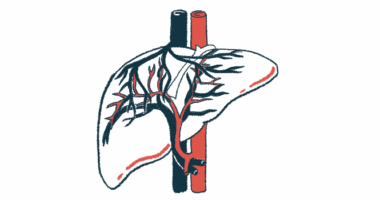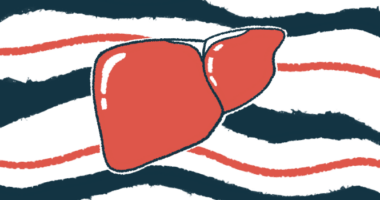Protein in blood may be liver scarring marker in biliary atresia
Infants with disease had higher levels of APP, study found

Higher levels of a protein called amyloid precursor protein (APP) in the blood may be a marker of fibrosis, or liver scarring, in biliary atresia (BA), a study found.
“Identifying children with BA who are at high risk of disease progression and liver transplantation is crucial for timely intervention and optimal management of this disease,” the researchers wrote. “APP and related amyloidosis markers may help guide clinical decision-making and improve outcomes for children with BA.”
The study, “Amyloid precursor protein as a fibrosis marker in infants with biliary atresia,” was published in Pediatric Research.
Biliary atresia is a rare infantile liver disorder marked by blockages of the bile ducts, a series of tubes that carry the digestive fluid bile out of the liver and to the intestines. Consequently, bile builds up in the liver, which can drive tissue damage and fibrosis that impairs liver function. A liver transplant may ultimately be the only therapeutic option.
Although liver fibrosis is a major health concern in BA, it can be hard to predict which patients are more or less likely to experience scarring. Usually, the only way to definitively assess liver fibrosis is to take a biopsy of the liver, which is an invasive procedure.
Tracking liver scarring
Keeping in mind the need for less invasive tests to track liver fibrosis in BA, a team led by researchers in Germany retrospectively analyzed liver biopsy samples from 14 infants with BA (50% girls, mean age 63 days). Six of them (42.9%) had advanced fibrosis, and eight had liver disease that eventually necessitated a liver transplant.
By measuring the activity of more than 750 fibrosis-related genes, the researchers found that infants with severe fibrosis had significantly higher activity levels of APP and other genes involved in amyloid metabolism in their livers relative to those with less severe fibrosis.
Amyloidosis is a process in which proteins form toxic clumps that accumulate in tissues, causing damage. The APP protein, coded by the APP gene, “was selected as the most promising BA marker,” with increasing levels being associated with increasing fibrosis severity, the researchers wrote.
Well-known fibrotic markers in biliary atresia, such as the COL1A1 and MMP2 genes, showed activity patterns comparable to APP. Further analyses showed that the APP protein was detected in all livers from infants with BA, particularly in biliary cells or inside the bile ducts, and in no healthy control liver tissue.
“Of all the genes included in our fibrosis panel, APP and genes related to APP regulation and amyloidosis appeared to be the most interesting,” the team wrote. “Based on the high expression of APP in BA liver biopsies with advanced fibrosis, we hypothesize that APP may be a driver of [fibrosis development] offering potential as a predictive biomarker for progressive liver fibrosis,” they added.
The scientists then analyzed APP levels in blood samples from 30 other infants with BA (57% girls, mean age 52 days) and 10 infants with healthy livers (10% girls, mean age 61 days).
Results showed that the BA group had significantly higher blood APP levels than age-matched healthy controls without the condition. There was also a clear association between higher APP levels in the blood and more advanced fibrosis.
The findings suggest that blood tests of APP levels might be a noninvasive way to test for liver fibrosis in BA, according to the researchers. “APP could serve as a potential liquid biomarker,” they wrote. “Future studies with larger [groups of patients] are needed to substantiate these results.”






